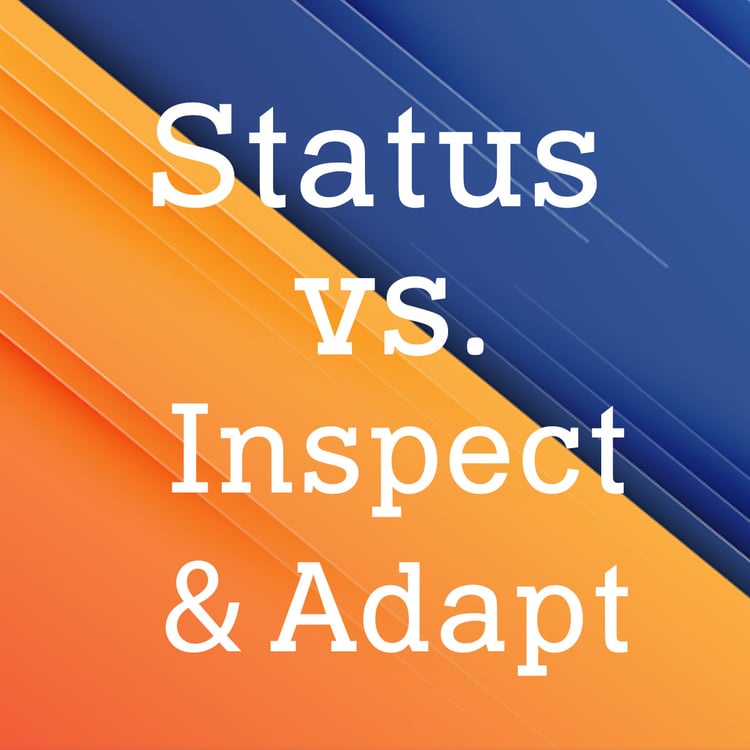
From the title of this post, it might seem that we are going to beat up on the ‘status reporting’ aspect. Let me clarify here, both are equally important and convey critical pieces of information to the audience.
What I want to highlight in this post is how inefficiencies are caused due to one replacing the other. In organizations using Agile, adapting to the changing landscape is a central tenet to its way of working. How people communicate is a significant factor in the success or failure of an organizations’ ability to adapt to change.
Before we explore how organizations struggle with effectively using the two ways to communicate, let’s first align on what they are.
Status reporting: The primary intent of this interaction is for one stakeholder to provide information to other stakeholders about the current state of progress. It is a one-way conversation with the information primarily flowing from the status update provider to the listener. There might be some interaction for clarification or instruction, but it is not built into the central idea of the interaction.
Inspect and Adapt: The primary purpose of this interaction is for the stakeholders to examine the progress towards the end goal, identify risks, acknowledge impediments and figure out actionable takeaways that will resolve or mitigate any challenges towards progress. Most Agile ceremonies share this primary intent and should be facilitated as such to achieve the aforementioned outcome.
What really happens: No matter how mature an organization is in its Agile journey, organizational factors such as psychological safety and human psychology influence how people contribute to the ceremonies. Let’s take a closer look at a couple of factors:
- FOMO: Fear of Missing Out. When there are no efficient ways to know the latest status of work, people tend to gravitate towards asking for status-related information during Agile ceremonies. If the status is made transparent and highly visible to the stakeholders, it will greatly reduce the desire to discuss it during discussions that should really be inspect and adapt. In Agile organizations, the use of BVIRs (Big Visible Information Radiators) such as Scrum Boards and relevant Agile metrics can accomplish this. It is critical to make the BVIRs readily accessible and easier to consume to get better user adoption.
- Perception and Recognition: Human behavior is often affected by how your actions will make you look. A status report allows a person to state what they have worked on so far and how it will make them look in the eyes of the audience for their progress. Inspect and adapt discussion makes people state the problems they are or could be facing and ask for help. It is a natural human tendency to try and not be the bearer of bad news. Especially in public forums, such as the Agile ceremonies. If people are getting enough recognition for their work and are made to feel safe for opening up and expressing concerns during the inspect and adapt discussions, the Agile ceremonies can become highly effective.
Tactically speaking, standups and scrum of scrums are typical examples of Agile ceremonies that should be heavily focused on inspect and adapt aspects. What ends up happening on most teams and programs is the ceremony turns into a status reporting session, leading most participants to not get true value out of the interaction.
If you would like to get some tactical advice on how to make these ceremonies more effective, please join us in a free webinar on November 3rd at 12pm EST, where I will discuss the topic in more detail with a fun story about chicken curry, draw the parallels and then do a deep dive into some effective techniques you can implement right now to improve the inspect and adapt aspect in your organization. Click here to register.
More from the blog
View All Blog PostsSubscribe to Our Blog
Fill out your email address to receive notifications about new blog posts from CC Pace!

